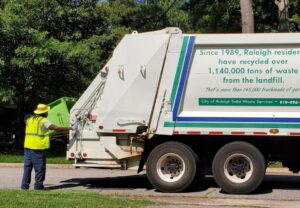What Life Is Like in the Economic Trenches
A New York Times article Sunday aimed at exploring the life of a fast food worker goes even deeper, and gets at both the frustration of the current economy and the possible benefits for those who would organize.
Eduardo Shoy is a 58-year-old married father of two with a $500,000 house bought 10 years ago in Queens when the kids were younger, his wife worked as a waitress, and he had a steady $22-an-hour job as a forklift operator in a drugstore warehouse.
Now the wife and kids are gone, moved to Pennsylvania so one child can start college while the other works in an Amazon warehouse. Shoy will join them as soon as he can offload the house they can no longer afford. The reason: His wife couldn’t work after tearing knee ligaments, and his good job was eliminated, replaced by a $7.25 an hour minimum wage job delivering KFC orders to homes and businesses. He eventually took on a second job making $12 an hour driving a forklift during the overnight shift at Kennedy International Airport.
So Shoy is fully employed, and then some, and still the family is going broke. The Shoys’ visit to the middle class was fleeting, as The New York Times reports Sunday. Two aspects of the story stand out. First, the quick and easy fall for the Shoy family, as well as the abject inability of the new low wage jobs, which have marked the recession recovery, to keep the family in the middle class. And Shoy’s timid steps from get-along worker to labor protester. From the article:
There are 55,000 fast-food workers in New York — more than the entire population of Harrisburg, Pa. — and most, like Mr. Shoy, are struggling to stitch together a living in an industry where the median wage is $8.90 an hour. Last year, fast-food workers in Manhattan earned average pay of $19,000 — or about the cost of Mr. Shoy’s Honda. In Brooklyn, it was $15,500; on Staten Island, less.
Since 2000, the number of fast-food jobs in New York City has increased by more than 50 percent — 10 times as fast as in any other type of private job. But the conspicuous increase has not received the attention given, say, to the city’s high-tech industry, nor has it lessened the financial insecurities of this growing work force.
According to a study released in October, only 13 percent of fast-food workers get health-insurance benefits at work. In New York State, three in five have received some form of government assistance in the last five years. Meanwhile, executive pay and profits in the industry are on the rise. Last winter, Bloomberg News determined that it would take a Chicago McDonald’s worker who earns $8.25 an hour more than a century on the clock to match the $8.75 million that the company’s chief executive made in 2011.
The classic image of the high-school student flipping Big Macs after class is sorely out of date. Because of lingering unemployment and a relative abundance of fast-food jobs, older workers are increasingly entering the industry. These days, according to the National Employment Law Project, the average age of fast-food workers is 29. Forty percent are 25 or older; 31 percent have at least attempted college; more than 26 percent are parents raising children.
So these outfits, most of them separately owned franchises, have become a source of living for tens of thousands of Americans, meager as that living might be.
As the Times notes, New York was the launch point for what has become a broad fight to unionize fast food workers, spreading to Detroit, Atlanta, Los Angeles and elsewhere. And although the campaign is financed largely by the SEIU, the participants are the workers. Including Shoy, who, the Times reports, attended the first labor protest of his life this summer. “We let them know how we were feeling,” Shoy told the Times. “The restaurants are making all the money. The worker isn’t getting no money at all.” And he plans to take part again, if he can squeeze in the time between the two jobs and sporadic sleep.
Yes, baby steps, but if the economic conditions can move someone like Shoy from passive to participant, then maybe what we’re seeing is the slow reawakening of the labor movement.
—Posted by Scott Martelle.
Your support matters…Independent journalism is under threat and overshadowed by heavily funded mainstream media.
You can help level the playing field. Become a member.
Your tax-deductible contribution keeps us digging beneath the headlines to give you thought-provoking, investigative reporting and analysis that unearths what's really happening- without compromise.
Give today to support our courageous, independent journalists.






You need to be a supporter to comment.
There are currently no responses to this article.
Be the first to respond.